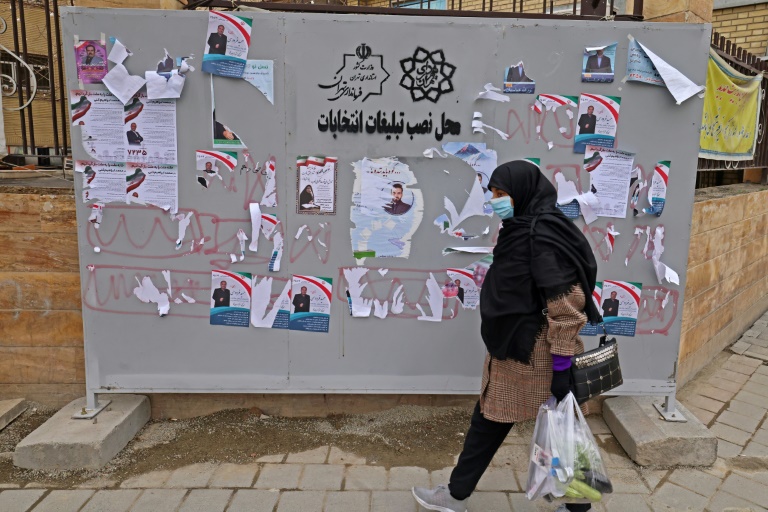Iran gears up for elections dominated by conservatives

The vote comes amid economic difficulties in Iran, which has also been grappling with the aftershocks of 2022 mass protests
Tehran – Iranians will cast ballots in legislative and key assembly elections on Friday, with conservatives expected to tighten their grip on power in the absence of any serious competition.
The vote comes amid mounting economic difficulties in Iran, which has also been grappling with the aftershocks of mass protests triggered by the 2022 death in custody of Mahsa Amini.
The Islamic republic’s supreme leader Ayatollah Ali Khamenei is due to be the first to cast his ballot on Friday at 8:00 am (0430 GMT) at one of the 59,000 polling stations.
“Everyone must participate in the elections,” Khamenei said in a speech this month, urging “influential personalities” to encourage people to vote.
“The more fervent the elections, the more national authority and national security will be secured,” he said of the vote, which will be held against the backdrop of soaring tensions in the Middle East.
The elections will take place with expectations of a low voter turnout looming large.
A recent poll conducted by Iran’s state television found more than half of respondents were indifferent to the elections.
More than 61 million, out of Iran’s population of more than 85 million, are eligible to vote.
Iran’s current parliament, which was elected in a 2020 vote during the Covid pandemic, saw a turnout of 42.57 percent — the lowest since the 1979 Islamic Revolution.
– ‘Cold’ political atmosphere –
“The (political) atmosphere remains cold,” read a headline in the reformist Ham Mihan daily on Tuesday, drawing a parallel with heavy snowfall in Iran in recent days.
Conservative daily Vatan-e-Emrouz hailed what it called the population’s “interest in the candidates’ electoral campaigns”, which began on February 22.
In Tehran, where less than 20 percent of eligible voters cast their ballots in 2020, election banners are visibly less prevalent than the previous elections.
Analysts expect the elections to be dominated by conservative and ultra-conservative candidates, similar to the current parliament.
Hopeful candidates had to be vetted in order to be allowed to stand.
Jurists in charge of the vetting process approved a total of 15,200 hopefuls — less than one third of the 49,000 who registered — to run for the 290-seat parliament, local media reported.
Voters are also due to elect the 88-member Assembly of Experts, a key body that appoints the supreme leader, a post held since 1989 by Ayatollah Khamenei, 84.
A total of 144 candidates have been approved to run for seats in the assembly, for an eight-year term.
Former moderate president Hassan Rouhani said that he was barred from seeking re-election to the assembly after 24 years of membership.
Iran is “very far from free and competitive elections,” former reformist president Mohammad Khatami was quoted as saying this month by the conservative Javan daily.
– Socioeconomic challenges –
The statements of the two ex-presidents fell short of directly calling for a boycott, unlike some opposition figures in Iran and members of the diaspora.
The Reform Front, a key coalition of reformist parties, has said it would not take part in “meaningless, non-competitive, and ineffective elections”.
The elections will be the first since months-long protests triggered by the death of 22-year-old Amini in police custody.
She had been arrested for allegedly flouting Iran’s strict dress code for women.
Iran’s economy has also been reeling under crippling US sanctions imposed over its contested nuclear programme.
Many in Iran have been struggling to make ends meet as they grapple with soaring inflation and a record depreciation of the rial against the dollar.
“There has been a lot of pressure on people as of late, as prices increased dramatically,” said 40-year-old housewife Masoumeh, walking near Tehran’s bustling Grand Bazaar.
“I don’t think the new parliament can change the economic situation.”
